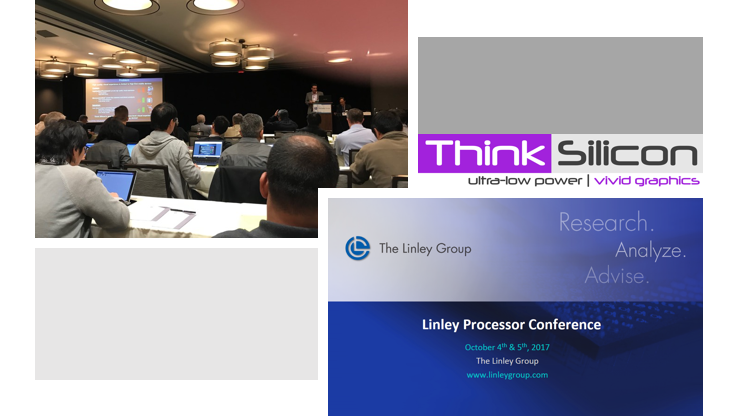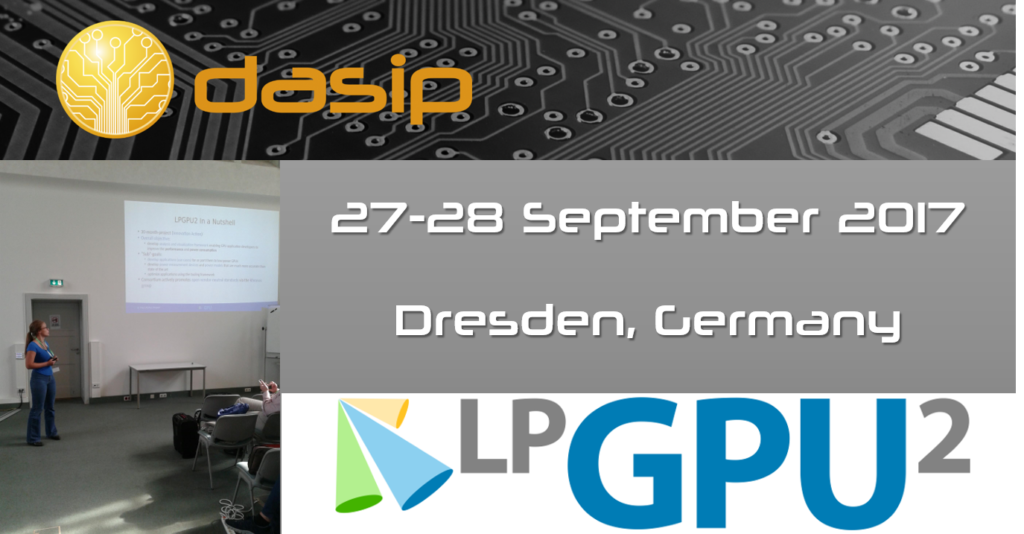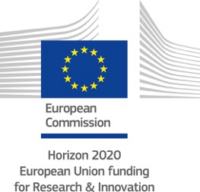The program for the PEGPUM 2018 workshop at HiPEAC 2018 in Manchester has been announced. More information can be found here. The program includes various technical presentations (from industry and academia) as well as a live demonstration showing the LPGPU2 toolchain analyzing GPU software.
Author Archives: Georgios Keramidas – Page 2
PEGPUM 2018 Program Announcement!
New Starter at Think Silicon S.A. – The LPGPU2 Run-Time Developer
Katerina Terzi is a graduate of the Electrical and Computer Engineering Department of the National Technical University of Athens and a junior IC engineer in Think Silicon. She is currently involved in the hardware development of a new multicore GPU of the NEMA®|S series, and its prototyping on FPGA boards.
Katerina has significant expertise in hardware design and FPGA prototypes. In the LPGPU2 project, Katerina is involved in improving the power model for NEMA® GPUs and for developing a run-time system that is able to provide highly accurate, fine-grained power estimations when executing ISP (Image Signal Processing) applications in NEMA® GPUs.
Think Silicon partners with SiFive
Think Silicon partners with SiFive’s DesignShare Ecosystem making its low-power graphics IP available through DesignShare and enabling companies of all sizes to develop custom silicon. SiFive, the first fabless provider of customized, open-source-enabled semiconductors, announced that Think Silicon, a leader in developing ultra-low power graphics IP technology, has joined the growing DesignShare economy. Through DesignShare, Think Silicon will make its complementary NEMA®|GPU and NEMA®|dc IP available for SiFive’s Freedom SoCs Platform at reduced upfront investment from customers. It is worth noting that the Power Models of NEMA®|GPUs (part of the NEMA® SW toolchain) were developed as part of the LPGPU2 EU-funded project.
With a silicon footprint 2.5 times smaller than competitive IP, Think Silicon’s proprietary compression techniques reduce the memory size six-fold, eliminating the need for external DDR memory. The result is a reduction of active power consumption by 73 percent, and 58 percent in idle mode.
For more information please view the related press release here.
Think Silicon @ Synopsys ARC Processor Summit Beijing
Think Silicon @ the Linley Processor Conference 2017
Think Silicon successfully participated last week in the Linley Processor Conference 2017 which was held between 4-5 October at California, U.S.. As being the largest and most prestigious event of the Linley Group, it included dual-track presentations on the latest processor chips, processor IP and other technology required to efficiently process neural networks, packets, vision, and other workloads used in deep learning, embedded, communications, automotive, Internet-of-Things (IoT), and server designs.
Within the Linley Processor Conference 2017, Dr. Iakovos Stamoulis, Chief Technology Officer and co-founder of Think Silicon, made a presentation entitled “Ultralow-Power 3D Micro-GPU for IoT-Class Devices” presenting, inter alia, the performance and power analysis tools developed in the LPGPU2 project. The emerging Internet-of-Things market, with display devices limited in area, performance, memory, thermal dissipation and battery capacity is adding design challenges for engineers. The end-user is expecting the same fluid interaction and high–quality graphical-user-interface (GUI) experience known from their smartphones and tablets. These demands cannot be met through hardware improvements alone, but the software must fully exploit the available resources.
To answer these challenges, LPGPU2 proposes to aid the application developer in creating software for low-power GPUs by providing a complete performance and power analysis process for the programmer.
LPGPU2 @ Conference on Design and Architectures for Signal and Image Processing (DASIP 2017)
The LPGPU2 consortium participated in the Conference on Design and Architectures for Signal and Image Processing (DASIP 2017) held between 27 – 29 September 2017 at Dresden, Germany. DASIP provides an inspiring international forum for latest innovations and developments in the field of leading-edge embedded signal processing systems and was considered as important dissemination opportunity for the project towards reaching its targeted audiences.
Within DASIP 2017, Think Silicon made a presentation entitled “Enabling GPU Software Developers to Optimize Their Applications – The LPGPU2 Approach” presenting in brief the achievements made in the first phase of the project (till month 18) and focusing on the progress made in applications; in power measurement, estimation, and modelling; and in the analysis and visualization tool suite. The presentation was given by Katerina Pontzolkova (GPU Performance Engineer at Think Silicon) and the related session was chaired by Georgios Keramidas (Technical Coordinator of the LPGPU2 project and CSO of Think Silicon).
Visualizing CPU (ARM) assembly and performance counters!
Capturing and visualizing CPU (ARM) performance counters!
Getting to know……Think Silicon
Think Silicon is an R&D intensive SME founded in 2007 specializing in high performance – low power Graphics IP semiconductor modules. As a fabless company, Think Silicon focus is on the design, development and marketing of products and formation of strategic alliances to achieve synergies, help reduce the entry costs, increase brand awareness and reach target customers. Working closely with customers and silicon wafer manufacturers around the world, the company has built a strong portfolio of silicon proven products that includes GPUs, display processors, and graphics accelerators for the IoT, Wearable and broader display devices markets, and its growing demand for ultra-low power, area and memory constrained SoCs. Company’s customers are leading fabless semiconductor companies like Lattice Semiconductors and that Sequans Communications.
The LPGPU2 team from Think Silicon (from right to left): Georgios Keramidas, Katerina Pontzolkova, Ignacio Aransay, Konstantinos Alexiou, and Chrysa Kokkala
Think Silicon in 4YFN 2017 Barcelona
After a bustling CES in Las Vegas, we are heading to nother exciting event with the 4Y4N/MWC in Barcelona!
IoT has arrived in different forms. Smart connected devices, either worn on the wrist or as embedded and fixed installed solutions in your smart-home are here to stay! Whether for fitness, health, security, productivity or entertainment, many of those applications require a graphically rich display experience and ultra-low power consumption.
At MWC we will demonstrate the first Ultra-Low power FPGA-GPU, VR / Image processing applications, and our latest SDK API development tool platform.



